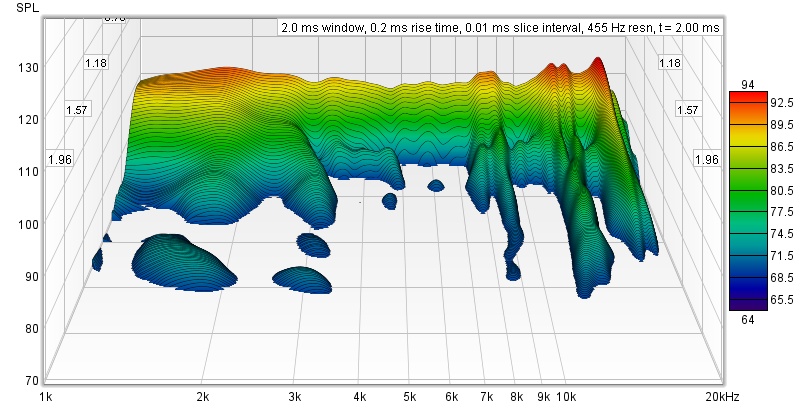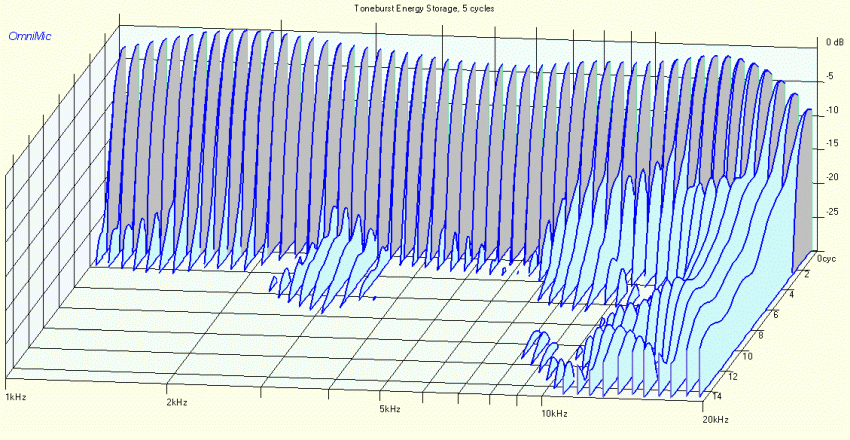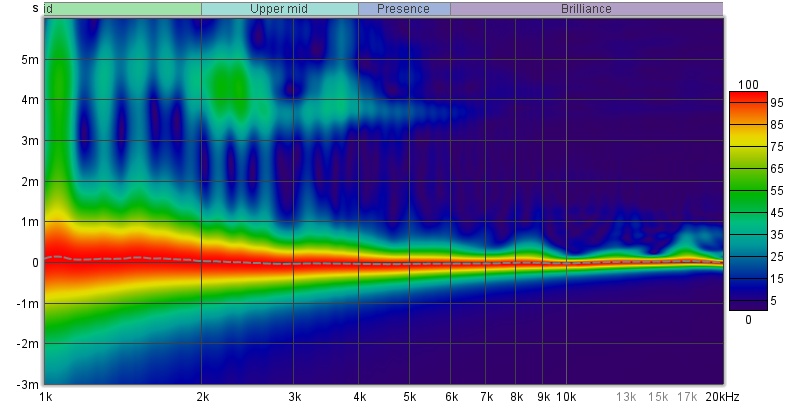|
While the Flycatcher will satisfy most listeners, she somehow doesn’t engage me. I’ve been racking my brain as to what I can do to make her sound better. My first thought was obviously to use another tweeter but the problem is not in the treble. It is in the midrange that I find insipid. I can do a 3-way but that will increase the cost tremendously. Not just the additional drivers but the crossover. After mulling over it for a few days, it dawned on me the HiVi C3N-III could be the solution. I auditioned the C3N-III when I was searching for a suitable driver for my Electro-Voice Evolve 50M clone so I’m familiar with her tonal character. The GF180-4 can be used for the bass while the full-range HiVi C3N-III takes care of the rest.
As it turned out, this combination works out perfectly. The FR plot above is of the GF180-4 in a 15 liters bass reflex crossed at 200Hz to the HiVi C3N-III. Crossover is electronic at 24dB/oct. The C3N-III is in a 1.5 liters sealed box that I used in the SuperMicro2. In this setup, the music jumps to life. The vocals are more realistic and distinct. At 24dB/oct, the bass is kept well away from the midrange. Though the bass of the GF180-4 cannot be compared to the high-end woofers, she is nonetheless quite appealing considering her cost.
The Waterfall plot of theC3N-III shows artifacts from 9kHz upwards. This is not unexpected as the FR plot shows an upward tilt in that region.
The Toneburst Energy Storage plot gives a better indication of the artifacts. The bunch of light blue slices from 7kHz ~20kHz are the artifacts seen in the Waterfall plot.
The Spectrogram shows the artifacts in the upper treble to be insignificant. They don’t last more than 1msec. However at 2.5kHz, there’s a green patch at 4.5msec. Again, it’s academic because it’s 50dB down and is dissipated after 4.5msec.
This is the sound I’m looking for. The midrange is slightly forward and well isolated. That is from the HiVi C3N-III. As for the Dayton GF180-4, she handles the bass splendidly. The Flycatcher-II BiAmp sounds like the Markaudio CHP-70P Gen2 with the Toucan-SF bandpass sub. The immediate difference is the bandpass goes lower. But that is because I crossed her at 60Hz. With this GF180-4, I’m using her as a direct radiating woofer and crossing at 200hz. This is a more conventional approach. Comparing the Flycatcher with this BiAmp Flycatcher-II, it is no contest. This version blows the passive Flycatcher away. Personally, the GF180-4 doesn’t work for me in a traditional woofer + tweeter 2-way. Her midrange just doesn’t stand out enough. Great for general listening or background music. Even though I use budget drivers for the Flycatcher, I couldn’t keep the crossover component low. If I did, the sound would be quite bad. So bear this in mind if you decide to build the Flycatcher. Unless otherwise stated, all measurements were made in Full Space. Mic at 36 ins, tweeter axis. Impulse Window=5ms. No smoothing applied. |

November 27, 2023HIFI DRIVERS, Projects



